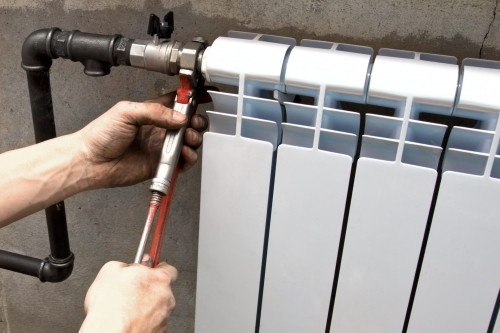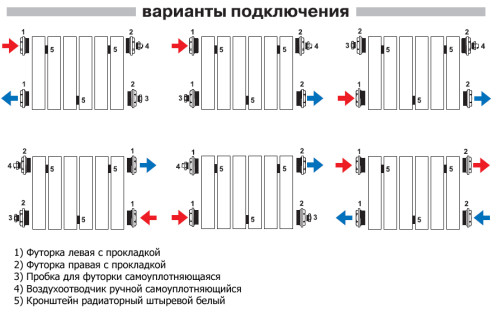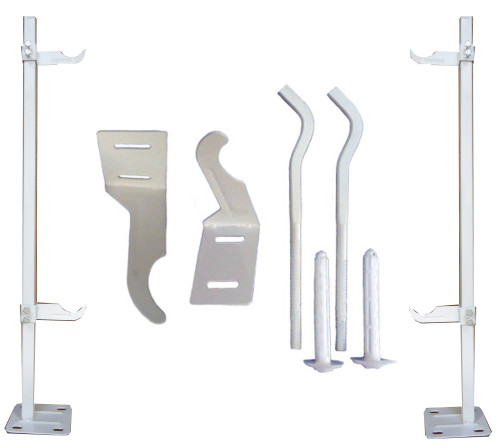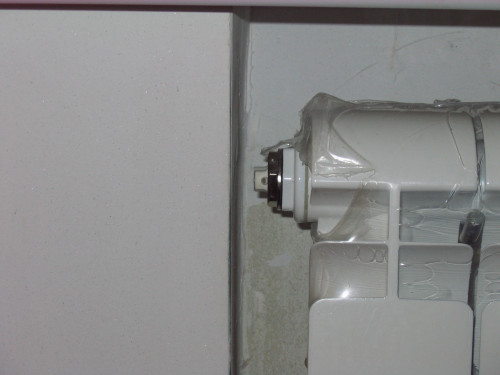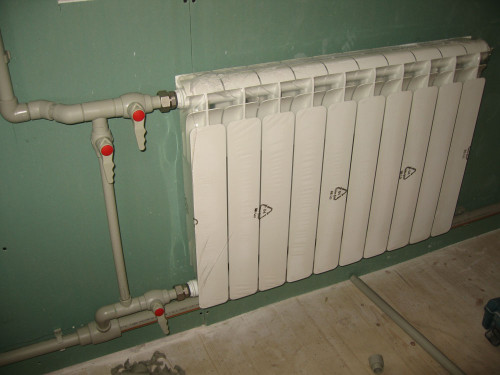
Installation of radiators do it yourself Climate
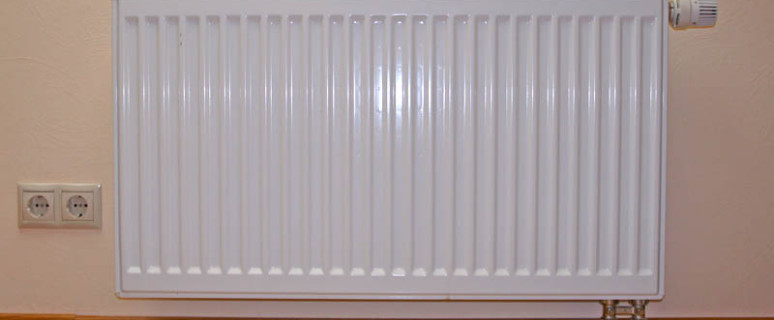
There are various types of heating systems. Despite this, in almost all cases, radiators are an integral element of the heating system. How to properly install the heating radiator and will be discussed in our article.
Content
Preparatory stage
At the initial stage it is necessary:
- carry out the calculation of the required number of elements of the heating system;
- draw the scheme of installation of radiators;
- buy radiators with pipes and fittings.
If there is a need to replace pipes and batteries that are connected to the general heating system of an apartment building, then you will have to additionally apply for housing and operational service. In most cases, the disconnection of a common riser is a paid service.
Naturally, the replacement of pipes and the installation of heating radiators is better to exercise in the summer when the heating of the premises stops. Especially relevant for apartments.
If there are shut-locking fittings (valves, cranes) or autonomous heating system, heating radiators are mounted without prior approval and at any suitable time.
To dismantle old batteries, it is necessary:
- overlap the riser and drain all the water;
- with the help of a grinder, cut pipes 10 cm from the floor and the ceiling;
- cut out outdoor threads on the remaining pipes;
- remove batteries from brackets;
- remove old brackets;
- align the wall (if necessary).
Connection type
Connecting the heating radiator can be produced in three main ways:
- side;
- diagonal;
- lower.
The side connection is the most common and suitable for batteries that have less than 12 sections. The supply of the coolant occurs through the top nozzle. The lower nozzle serves to remove it. This type of connection has a good heat transfer indicator and allows you to hide the pipes in the wall (adapters are used for connecting pipes with the radiator).
If there are more than 12 sections and heating of houses, a height of more than 2 m, the radiator is connected by a diagonal method. The flow of heated water occurs through the upper nozzle. The heat carrier is assigned using the lower nozzle located on the other side of the radiator.
At the lower connection, the feed and removal of the coolant is carried out with the help of lower pipes located from different sides of heating radiators. When applying this technology, you can hide the pipes.
Determination of radiators location
Before installing radiators, you should correctly place the places where they will be located.
To ensure efficient heat transfer to the location of the radiators, the following requirements are imposed:
- Battery fastening occurs with a slight bias. As a result, air will not accumulate in the upper part.
- The distance from radiators should be:
- to the floor - 10-12 cm;
- to the windowsill - 8-10 cm;
- to the walls - 3-5 cm.
Failure to comply with these radiators installation rules will lead to a decrease in thermal energy flows and difficulties in the process of cleaning.
Installation of brackets
Thanks to the sectional principle, the need for the amount of radiators for heating a room or another is fairly easily determined. For reliable fixation of batteries, fasteners will be required.
The main fastener is a heating radiator bracket. Brackets are pin and angular. Pins fasteners are more common. Thanks to them, high-quality mounting of radiators to the wall made of concrete, brick or gypsum is made.
The procedure for mounting brackets provides:
- marking points of placement of fasteners;
- drilling holes;
- insert a dowel in the holes;
- screwing brackets.
With the right work, the batteries should be based on each bracket. After that, you can proceed to such a process as the installation of the radiator.
Assembling radiators
Most modern radiators models have four holes that are located at the corners. Depending on the type of connection, two "workers" holes for supplying and removing the coolant are selected. The two remaining holes should be closed with plugs or cranes for air removal.
Installation of heating radiators with their own hands provides for the following actions:
- screwing fittings in the collector of the battery;
- compound fittings with pipes;
- installation of ball valves;
- installing Maevsky cranes.
The screwing of fittings using threaded connections is carried out in this order:
- First, the screwing of adapters is performed manually.
- The final twisting of the fittings occurs with a dynamometric key.
In order to avoid leakage, threaded compounds are compacted by FMU tape or plumbing flas. Wreathing of the sealer produced:
- for the right thread - clockwise;
- for the left thread - counterclockwise.
Installation of ball valves allows in the future without any problems to repair radiators without disconnecting the heating system. But there is a nuance that should be taken into account when performing this work. It lies in the fact that the installation of shut-off-regulating reinforcement in the apartment should only after agreeing with the relevant service.
Maevsky's taps are designed to remove air from batteries that are subject to the process of delivering the inner cavity.
Such devices include aluminum radiators. Everything is explained by the fact that aluminum contributes to the occurrence of hydrogen as a result of chemical reactions occur inside the battery. If you cannot remove air from an aluminum radiator in a timely manner, it may explode.
After completion of the installation work, the system trial is carried out:
- alternately open cranes from a common riser;
- checked the presence of leaks;
- with the help of the crane of Maevsky, air bleats;
- pressure is measured in the system;
- when identifying flaws, they should be immediately eliminated.
Some Soviets
To get high-quality radiator heating, follow the following rules:
- The thermal power specified by the manufacturer is often in practice it turns out to be less. Therefore, when purchasing radiators, add the number of sections or choose more powerful models.
- When replacing radiators in apartments with a centralized heating system, it is necessary to take into account the heating temperature of the water (can reach up to 105 ° C) and pressure (up to 10 atm) for this reason it is necessary to buy only those batteries that will solve the load data.
- If the connection of the pipes with batteries occurs under a slope, then a slight skew (up to 2 cm) should be in the direction of the coolant movement.
- It is forbidden to mount heavy radiators directly on the walls made of drywall or wood. In this case, the support for the equipment will serve the floor stands. The wall for radiators performs only supporting function.
- To prevent the decrease in heat transfer, the batteries do not need to close the furniture, curtains or decorative lattices. It is possible to enhance the heat effect by installing a shield from a material reflecting heat.
- Often, the inclusion of pump equipment becomes the cause of hydrowards in the heating system. Bimetallic radiators are best "tolerated" this phenomenon.
- Installation of aluminum, bimetallic and steel batteries is carried out without removing the protective film. Only after the end of the mounting work the film is removed.
Video on the installation of the radiator:




